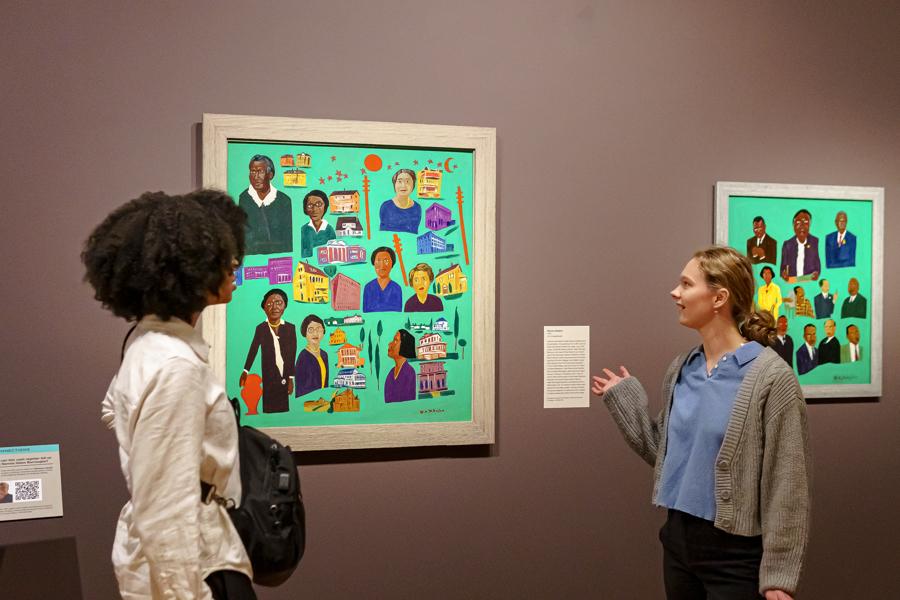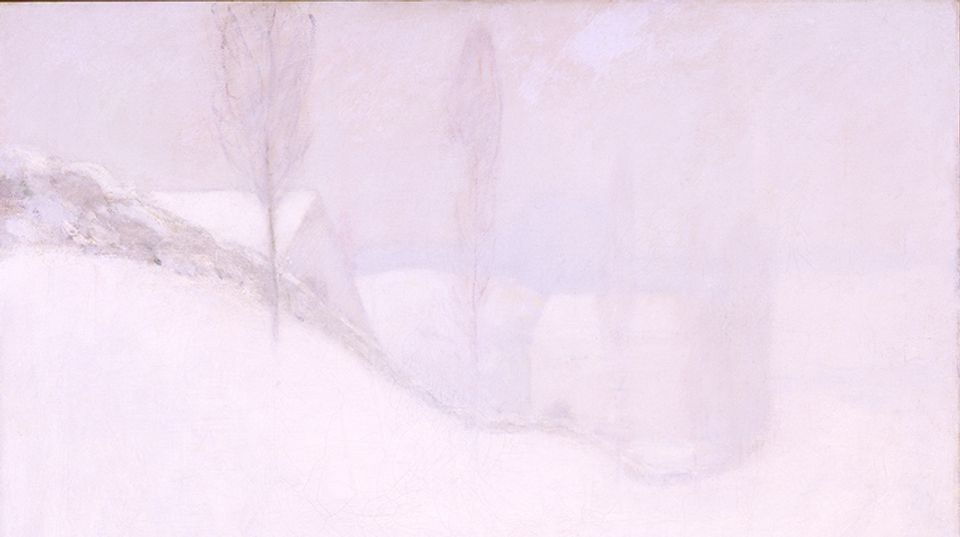
Poet Mary Oliver asks in “Spring,” “Who doesn’t want the sun after the long winter?” Show of hands? Yes, we’re all glad spring is here with its longer days and warmth. Here at the Smithsonian American Art Museum, the season provides the perfect opportunity for an artful spring refresh: A time to share new exhibitions and exciting programs with our visitors that feature our singular collection of American art and craft.
Recently, we’ve had great news about visitation to SAAM, our main building and the Renwick Gallery. Based on the newly published annual survey of attendance at art museums by The Art Newspaper, SAAM has the distinction of being the fourth most visited art museum in the United States with more than 1.4 million visitors walking through our doors. Visitation for the first quarter of 2024 is up more than 9% for the same period last year. I am delighted to see so many people in the galleries. Our attendance at virtual programs also continues to be robust, and traffic to our online content—including new artist videos we’ve published on YouTube—is growing.
And it wouldn’t be spring in DC without the beloved cherry blossoms, the city’s signature burst of color. At SAAM, we partnered with the National Cherry Blossom Festival for the eleventh year in a row, hosting a temporary video projection by four contemporary DC artists—Robin Bell, Matthew Curry, Jonathan Monaghan and Nicolas Shi—that for four days illuminated a part of SAAM’s historic building with images of cherry blossoms. We also presented in-person and virtual programming, including our popular Cherry Blossom Celebration with traditional Japanese taiko drumming by the group Nen Daiko, musical performances, and hands-on activities for families. More than 10,000 people participated!
Our spring exhibitions are filled with joy, depth, deep emotion, and surprising revelations with all three drawing artworks from SAAM’s wide-ranging collection. Fighters for Freedom: William H. Johnson Picturing Justice, on view through September 8, is one man’s broad vision of those who fought for social and racial justice, including Marian Anderson, Harriet Tubman, Eleanor Roosevelt, and Mohandas Gandhi, all portrayed in Johnson’s colorful, signature style. The exhibition features thirty-four works—thirty-two from SAAM’s extensive holdings of over 1,000 works by Johnson and two major paintings from the Hampton University Museum. Fighters for Freedom represents the first time since 1946 that paintings from the series will be presented together and builds on more than fifty years of the Smithsonian American Art Museum of preserving, displaying and interpreting a lifetime of work by this great American artist.
The exhibition is made richer by in-gallery interpretation materials that help decode some of the more intricate paintings, as well as videos that feature curators from across the Smithsonian speaking about Johnson-related objects in their collections. These include Nat Turner’s Bible and Marian Anderson’s fur coat. This landmark exhibition is a timely and powerful reminder of the role of art as a tool for social justice. It’s one of the most accessible and engaging we’ve developed in recent memory.
Pattern and Paradox: The Quilts of Amish Women, on view at SAAM’s main building through August 26, features colorful and geometric textiles created between 1880 and 1950, and adds new perspectives to a traditional art form. Drawn from the collection of Faith and Stephen Brown of recent and promised gifts to SAAM, the exhibition celebrates the quilts, the women who made them (many of them unknown), and considers their unique role in American art today.
Looking ahead, Subversive, Skilled, Sublime: Fiber Art by Women, opens at SAAM’s Renwick Gallery on May 31. It threads the needle on the important role women played in transforming textile work into an art form. The featured artists—including Anni Albers, Consuelo Jimenez Underwood, Emma Amos, and Joyce Scott—turned traditional craft into a powerful art form not afraid to engage with questions of race, politics, and social justice. The exhibition, organized with the Smithsonian’s Archives of American Art, features many of the artist’s voices. This rich content is featured in Backstitch, a podcast produced by SAAM that takes a deeper look into the lives and creative practices of the artists in the exhibition.
These exhibitions add another layer of meaning to the Mary Oliver quote I began with: light follows darkness and often it is our artists who illuminate the path for us, whether it’s a painter of the Harlem Renaissance, Amish women quilters from the last century, or women textile artists trying to weave meaning into the world: The light shines brightly in their work.
Thank you as always for your interest in and support of all we do.
Stephanie Stebich
The Margaret and Terry Stent Director



















